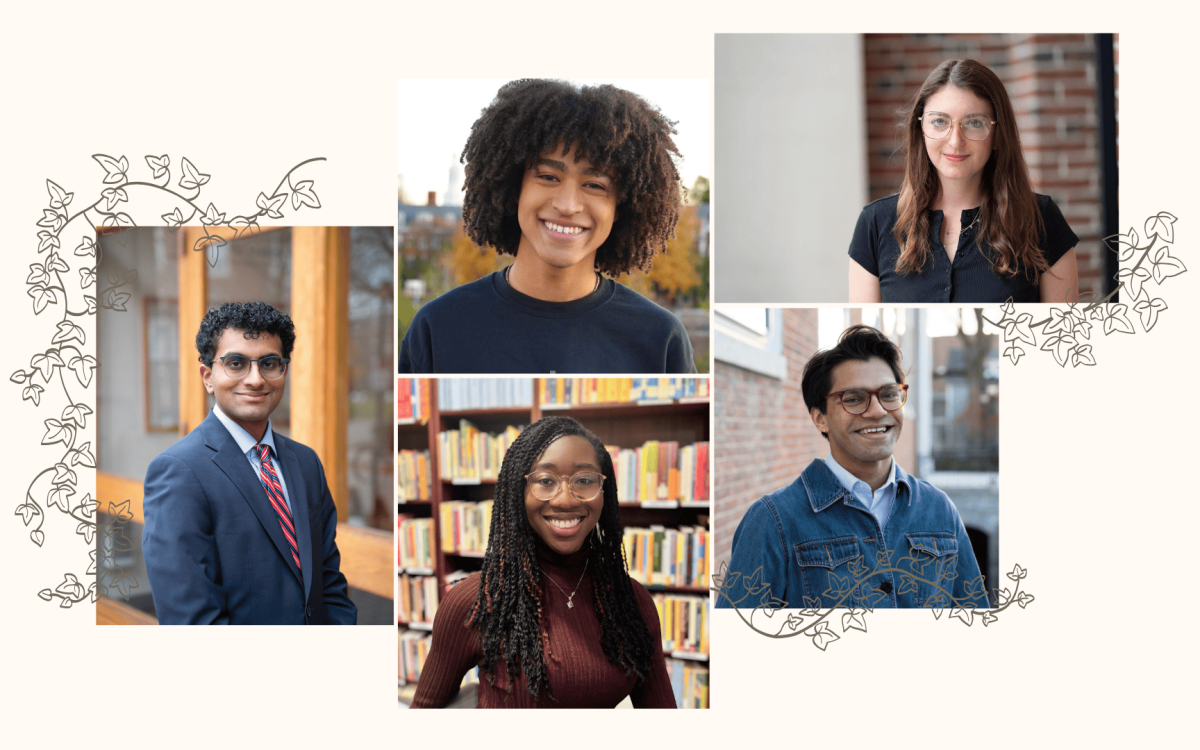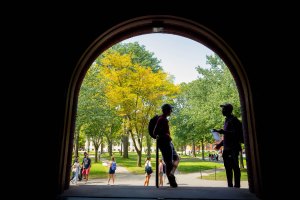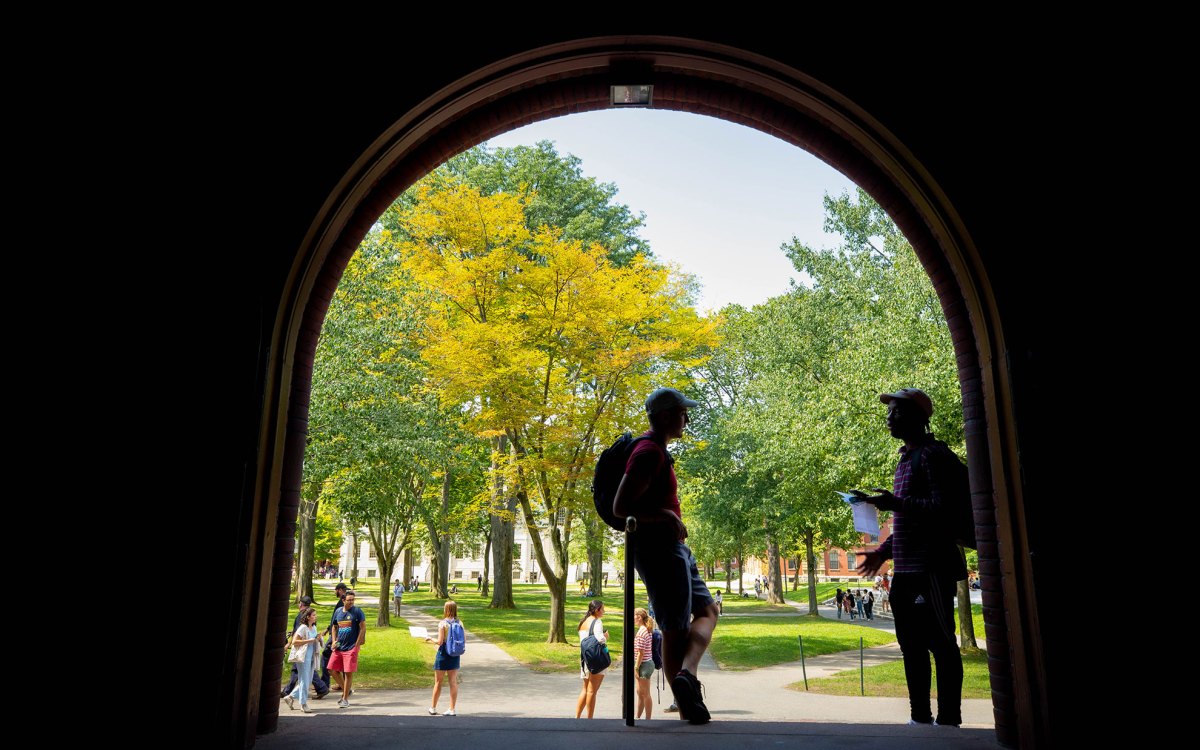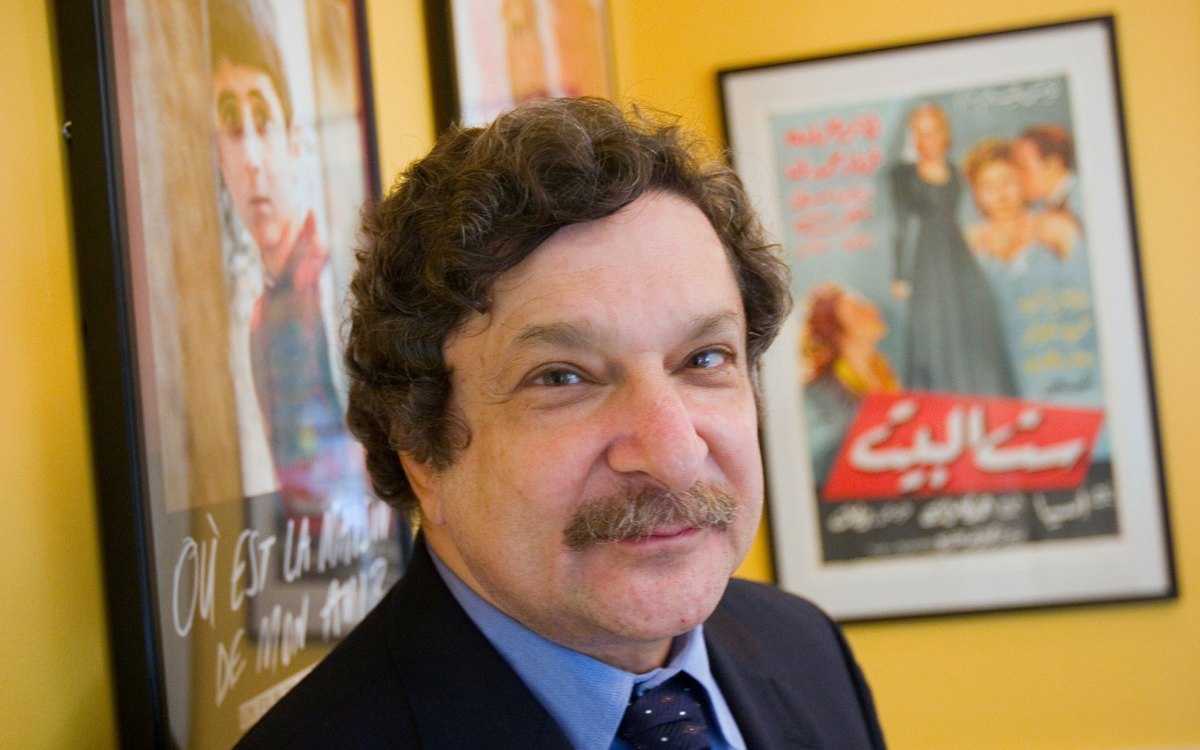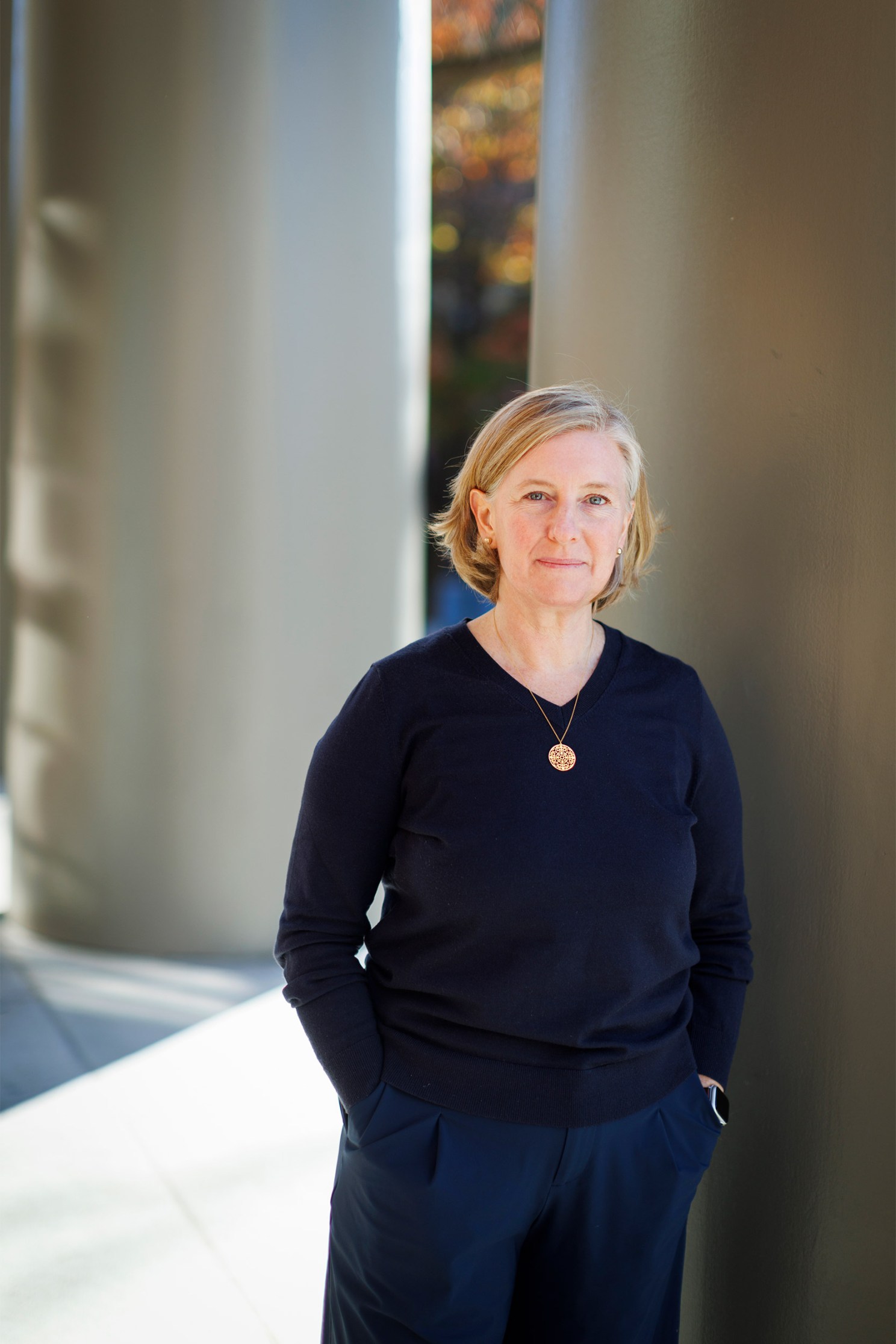
Hopi Hoekstra.
File photo by Stephanie Mitchell/Harvard Staff Photographer
Leading FAS in period of major challenges, opportunity for change
Hopi Hoekstra details what she’s learned in first two years as dean, her moves to strengthen funding, academics, admissions, and expand aid
Hopi Hoekstra has led the Faculty of Arts and Sciences (FAS) through a period of tremendous challenge and change. Now in her third year as dean, the questions she faces are more complex than ever. But she proceeds with a clear sense of purpose and strong collaborators.
“Leadership is a team sport,” said Hoekstra, Edgerley Family Dean of the FAS. “In the FAS we have been working on big issues, from the state of discourse on our campus to academic rigor to real financial challenges. These aren’t problems that any one person can solve. It’s about working together and rowing in the same direction.”
It’s a leadership style the evolutionary geneticist, who also holds the titles of C.Y. Chan Professor of Arts and Sciences and Xiaomeng Tong and Yu Chen Professor of Life Sciences, honed in the science lab.
“I built my lab by bringing together people with diverse academic backgrounds in neurobiology, genetics, development, and computational biology,” Hoekstra said. “Because we all brought different perspectives and expertise, we could tackle what I saw as some of the big unanswered questions in biology.”
In an interview with the Gazette, which has been edited for clarity and length, Hoekstra spoke about finding opportunity in adversity and her empirical, faculty-led approach to leadership and problem-solving. She also reflected on her top priorities for the year.
What did you learn during your first two years as FAS dean that has shaped how you are leading?
Excellence — in our teaching, in our research, in the intellectual life of our community — is who we are. But it doesn’t sustain itself automatically. Over the last two years, we’ve had to look squarely at the pressures that put that excellence at risk — from the evolving regulatory environment to our longstanding and widening structural financial deficit in the FAS.
My focus as dean has been to face those challenges head-on — not just to understand them, but to turn them into an opportunity to ask who we want to be as a faculty, and what it will take to get there. That means aligning our ambitions with our resources, setting priorities we can stand behind, and holding fast to the principles that define us. Even when it’s hard.
“My focus as dean has been to face those challenges head-on — not just to understand them, but to turn them into an opportunity to ask who we want to be as a faculty, and what it will take to get there.”
As a scientist, I know to surround myself with expert collaborators. I know about the power of bringing data to bear on big challenges and big decisions. I am grounding our work in the collective wisdom of our community.
This is a challenging time, but also a clarifying one. There will never be a better time than now to take on this important work. And if we can be open to change, willing to try new approaches and to trust each other, I believe we’ll emerge stronger and more focused on our core mission than ever.
You have made preserving the FAS’s research excellence and funding an urgent priority. As a biologist whose lab lost federal funding, can you talk about how you are approaching this work?
I understand first-hand how even brief pauses in funding can have ripple effects. That is why I assembled a “blue ribbon” committee of faculty whose work also relies on federal funding. Their expertise spans the sciences and social sciences, and I asked them not to advocate for their own departments and disciplines but to think about how we can best sustain research continuity across the FAS.
The Research Continuity Committee has been instrumental in outlining principles, prioritizing funding opportunities, and making solid recommendations to me that I have implemented in the FAS.
Looking ahead, I’ve asked them to think boldly about new funding models for Harvard scientists, approaches that encourage innovation and risk-taking. This moment calls for exactly that kind of boldness and creativity.
What do you use as your north star in this uncertain financial moment?
I often think back to when I was considering joining Harvard almost 20 years ago. What struck me was the sense of boundless possibility; it felt like a place where I would be limited by only my curiosity and imagination. We must preserve that spirit by continuing to recruit the very best faculty and students, and by creating an environment where the next generation can do their best work. Our academic mission demands it.
This can only happen when colleagues are empowered as true partners in problem-solving. I think of the faculty leading major FAS initiatives, for example, on civil discourse and generative AI. I think of our new Council of Chairs and Council of Center Directors, which bring together faculty leaders to share ideas and learn from one another. And I think of our divisional deans and the SEAS dean, who are invaluable thought partners as we make tough decisions and set ambitious goals.
You’ve pursued several interventions to build financial capacity for the FAS. Can you talk about these efforts?
The FAS’s financial landscape is complex. The recent reinstatement of federal grants is certainly welcome, but it doesn’t meaningfully ease our broader financial constraints in the short term.
Our structural deficit predates recent disruptions and has only deepened over time. Add that to the 6.5-fold increase in the endowment tax, which will hit the FAS particularly hard.
This leaves us with very little margin for flexibility. That is why we’re making structural changes now to ensure that we have the capacity and agility to safeguard and invest in our academic priorities.
Let me provide two examples.
First is the Taskforce on Workforce Planning, which is identifying ways to build financial capacity in our administrative operations and, at the same time, to work more effectively and efficiently in service to our faculty and students.
Second, I reconstituted the Faculty Resources Committee, which is providing faculty-led guidance on how to preserve and strengthen our core academic mission over the long term. Both groups have worked diligently through the summer and early fall and will share their early findings in the coming weeks.
You have made some big moves in undergraduate admissions, including reinstating standardized testing requirements and most recently, significantly expanding financial aid. What drove these decisions, and why are they important?
When I think about admissions, two priorities guide me: excellence and opportunity.
On the excellence side, reinstating standardized tests gives us another piece of information about an applicant. When we consider scores in the context of a student’s background and circumstances, they can help us identify talent and potential that might otherwise be missed.
When it comes to opportunity, our commitment to access couldn’t be stronger. For the Class of 2029, 45 percent of students are not paying tuition, and for half of them, their entire Harvard education will be free. Expanding financial aid ensures that cost is never a barrier for exceptional students from any background.
Recentering academics for students has been a priority from the start of your deanship. What does this mean to you, and how are you pursuing it?
At my very first faculty meeting as FAS dean, we had a lively discussion about a report on grade inflation led by Dean of Undergraduate Education Amanda Claybaugh. The report highlighted a drift away from the classroom as the center of the undergraduate experience — correlated with grade inflation, reduced attendance, and less preparation and active engagement.
In response, I approached this work by bringing together a team. The Classroom Social Compact Committee used data to quantify these trends and developed recommendations that are now being implemented by a network of partners in Harvard College, the Bok Center for Teaching and Learning, and the Kenneth C. Griffin Graduate School of Arts and Sciences to reinvigorate the classroom experience.
As faculty, we have a real responsibility to make our classrooms spaces of curiosity, challenge, and open exchange, places that students don’t want to miss, where they wrestle with ideas that shape them as thinkers and leaders long after Harvard. I am optimistic, as we are already seeing strong faculty engagement and positive momentum.
You’ve met with thousands of members of the Harvard community by now. What are some of moments that have stayed with you?
About a year ago, I began hosting small lunches with faculty from across the FAS. Each gathering brings together about eight colleagues — almost always from all three academic divisions and SEAS — with no set agenda other than getting to know one another and sharing our work.
It’s a simple but powerful reminder of why we all are here: to learn from one another. I’ve seen new collaborations spark right at the table. One recent example: At one of these lunches, an environmental historian met an astronomer from the Center for Astrophysics, and now they’re launching a new interdisciplinary project together.
Creating space to make these connections has been nothing short of inspiring. It’s a reminder of what unites us as a faculty and why the FAS is such an extraordinary community.
